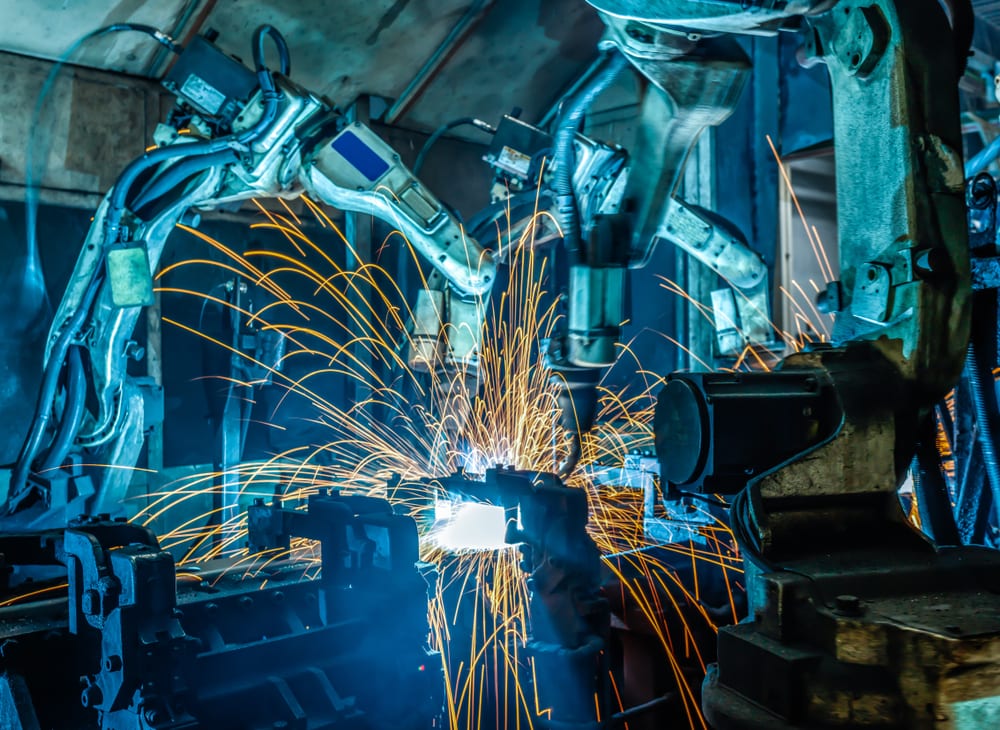News & Blog
The Pros and Cons of Robotic Welding
The American Welding Society (AWS) has reported that by 2022, the welding industry is expected to experience a shortage of more than 450,000 labourers. The case for robotic automation is starting to feel much more compelling. Robotic welding is the future and should be a key consideration for manufacturers moving forward. There are many benefits that come with robot welding, and it’s important to make the most of this process. Here are some of the pros and cons that come with robotic welding.
Pros
Increased Uptime
10% of manufacturing tasks today are performed by robots, with this figure expected to hit 25% by 2025. One of the key reasons for this is efficiency, a core advantage of robotic welding. They don’t take breaks to eat or rest, and they don’t need to work shifts, robotic welders enhance efficiency by as high as 85% uptime versus the 20% offered by manual welding. In some instances, welding robots incorporated into fully automated systems can work in what’s known as ‘lights out manufacturing’, a process capable of operating around the clock without the need for much human interaction.
Enhanced Safety
Welding can be a dangerous profession, especially in confined spaces with toxic fumes potentially causing harm to workers. There are plenty of hazards of welding work, including explosions, burns, and radiation. The great thing about automating the welding process is that you remove this risk, lowering the chance of workplace injuries and adverse health effects for welders.
Better Accuracy
Accuracy is one of the most important aspects of the welding process. Automating the welding process is an effective way of improving the accuracy and repeatability of the weld, considering efficiency is also improved you can guarantee that output is increased to a high standard. Robots typically have a position repeatability accuracy of ± 0.04 mm, making them ideal for consistent high-quality welds.
Less Waste
Compared to manual welding, robotic welding can produce far less waste for your business as it removes the possibility for human error. Due to the fact that robots are far more accurate and precise with their work, there are far fewer mistakes, and in turn, less waste is produced. By minimising waste, welding costs are reduced and will help a company save money in the long-term.
Cons
Higher Upfront Cost
It should be noted that despite many of the positives, integrating robotic welders would involve a higher upfront cost than manual welders. The cost of installing an automated system can vary pretty drastically, however, cheaper alternatives such as refurbished robots do exist.
Not Feasible for Small Projects
When it comes to smaller projects, you’ll probably find that it’s easier, cheaper, and far less stressful for a manual welder to undertake jobs. Robotic welding has its place and is imperative for large or long-term projects. To incorporate robotic automation processes into smaller projects could mean that the programming time actually takes longer than the welding job itself, and this would be counterproductive.
Less Flexible
Lack of flexibility can prove to be problematic. Robots don’t have the instinctive ability to react as humans do. A manual welder can alter their working process based on observations if necessary. Generally, a robot’s ability to assess and react to a situation is limited, something that will undoubtedly change as technology develops. However, for the time being, the operator must stop the robotic process and then reprogram a new process once again.
It should be noted that despite many of the positives, integrating robotic welders would involve a higher upfront cost than manual welders. The cost of installing an automated system can vary pretty drastically, however, cheaper alternatives such as refurbished robots do exist.
When it comes to smaller projects, you’ll probably find that it’s easier, cheaper, and far less stressful for a manual welder to undertake jobs. Robotic welding has its place and is imperative for large or long-term projects. To incorporate robotic automation processes into smaller projects could mean that the programming time actually takes longer than the welding job itself, and this would be counterproductive.
Summary
Welding relies on efficiency, accuracy, and precision. While it’s not exactly a binary process, it’s important to find more cost-effective methods as a business-exercise. Robotic process automation is the ultimate choice for businesses seeking an efficient, cost-effective, and COVID-proof way of continuing to weld as safely and professionally as possible.
If you think your business would benefit from the integration of robotic automation, don’t hesitate to speak to our friendly experts here at RoboMotion. Call 01746 866 711 or send us an email on info@robomotion.co.uk today! We’re happy to help you find the right solution.
